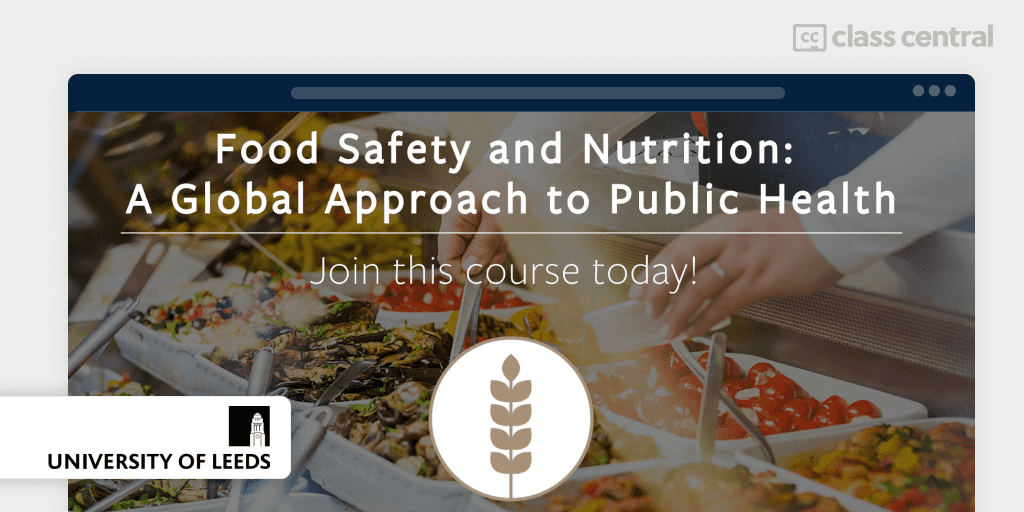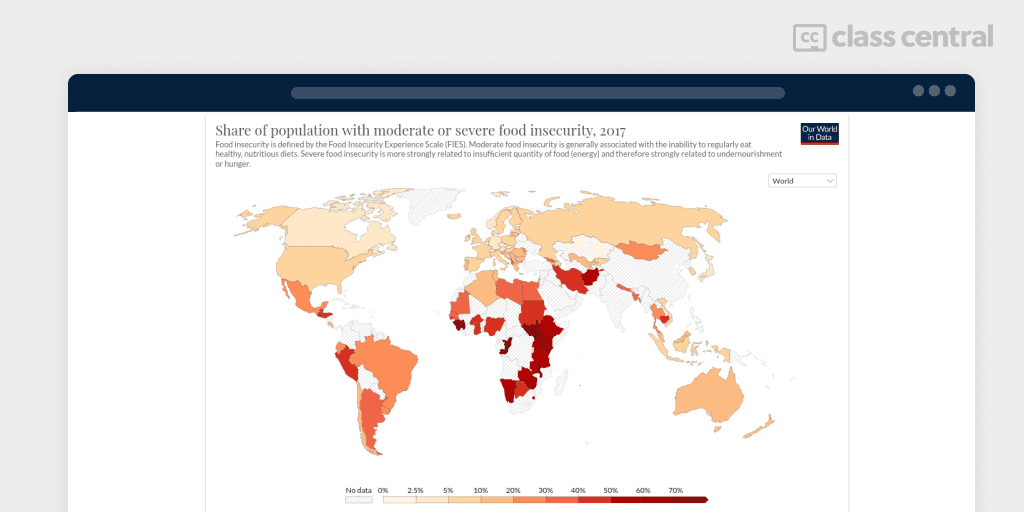Course review: Food Safety and Nutrition – A Global Approach to Public Health
Discover the factors that affect food safety and security and how to address them. A great course for anyone seeking a thought provoking and nuanced exploration of global food issues.

I decided to take this course because I am considering doing a further degree at masters’ level. It has been nearly 50 years since I studied in depth. Could I still assimilate information and answer questions appropriately?
I picked the course because I had studied Food Science as a degree, so I was interested in the topic and in developments in recent times.
The course Food Safety and Nutrition: A Global Approach to Public Health is funded by the British Council and is a collaboration between the University of Leeds, Jiangsu University in China and the Nelson Mandela Institution of Science and Technology in Tanzania. A number of academics were listed as contributors to the course.
As mentioned above I am educated to a degree level. Furthermore, I have a PhD. I was comfortable that the reading involved and any processing of information would be achievable. That said, the course is accessible to anyone comfortable with reading and understanding scientific and technological information.
What you will learn in this course

The course reviews human nutrition. It talks about, amongst other related topics, imbalances in diets, the problems of food availability and poor nutrition. It also covers factors which affect food safety and security. With these aspects covered, participants are encouraged to consider how some of these issues might be addressed. The course encourages you to think broadly and holistically when considering approaches to address problems. In my opinion, in order to fully consider these questions it is important to read around the topics and research further. Links to helpful research papers or reviews from major advisory bodies are provided. When I was completing the course these links were not always live, but it’s straightforward enough to just search for them on the Internet.
Many of the topics explored were not new to me but I was fascinated to see how much greater our knowledge is now. The impediments to solving food adequacy, safety and security remain in many ways the same as fifty years ago which is depressing. The course paints a more positive and achievable picture than I do.
Time commitment and passing score
The course is set out in three parts. They are described as “weeks” but there is no penalty in not completing in three weeks. I think it is quite possible to complete it in three weeks too. For my part, I spent a lot of enjoyable time reading around the topics. This is not essential.
In order to earn a certificate on the course you need to mark at least 90% of steps as complete, and have an overall course score of at least 70%. The score is generated by the answers to the quiz at the end of each week’s module. These are multiple choice questions. Provided the information in each section is understood and each step marked as complete this should not be considered too difficult.
The asynchronous discussions
The course has opportunities to engage in discussions at the end of each section. This does not work well. I don’t see how it could. People from around the world are taking this course and at different times. How could they meaningfully discuss? I was an enthusiastic completer of the comments sections; others seemed less so. Other comments were from participants who had taken the course much earlier in the year. This is not the basis for discussion. I am also not returning to the course regularly to check if anyone is agreeing or disagreeing with me!
Conclusion

I enjoyed the course and learned more than I expected. I feel I met my personal objectives for taking part. I would recommend the course to anyone seeking a thought provoking and nuanced exploration of global food issues.






